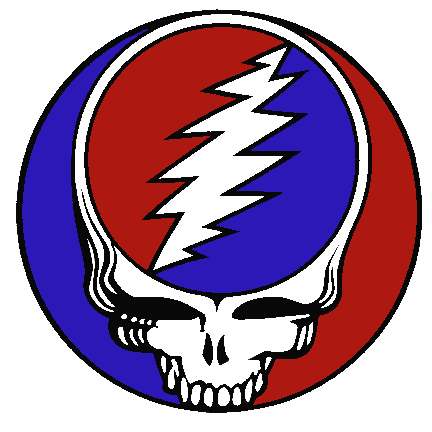
Longtime Grateful Dead confidant Owsley “Bear” Stanley died in a car crash near his home in Australia earlier today. Though his exact age was not known, Stanley was believed to be 75.
Stanley first met the members of the Grateful Dead at an acid test in San Francisco in 1966. He held many roles in the band’s organization over the years, including manager, financier, sound designer and recording engineer. He designed the group’s signature Wall of Sound system and co-designed its iconic lightning bolt/skull logo with artist Bob Thomas. Though Stanley and Thomas originally created the logo in 1969, the insignia first entered the public consciousness when it appeared on the band’s 1973 live album History of the Grateful Dead, Volume 1: Bear’s Choice, a tribute to the recently deceased Grateful Dead keyboardist/vocalist Ron “Pigpen” McKernan. The album also popularized another Dead logo inspired by Stanley: the psychedelic dancing bear. The dancing part of the logo’s design is a reference to his brief stint as a professional ballet dancer in the ’50s and members of Stanley’s family coined his Bear part of his nickname when he started growing body hair at a young age.
“The Dead in those days had to play in a lot of festival style shows where the equipment would all wind up at the back of the stage in a muddle,” Stanley explained on his blog. “Since every band used pretty much the same type of gear it all looked alike. We would spend a fair amount of time moving the pieces around so that we could read the name on the boxes. I decided that we needed some sort of marking that we could identify from a distance.”
Born the grandson of a former Kentucky governor, Stanley served 18 months in the United States Air Force before being discharged. He briefly worked as ballet dancer and attended UC Berkeley before turning his attention to the production of LSD. Stanley—who was known for his pure strain of acid—was a chief supplier of Ken Kesey, the Merry Pranksters and members of the Bay Area music community. He is profiled in Tom Wolfe’s book The Electric Kool-Aid Acid Test and, according to reports, produced more than a million doses of LSD at his labs.
“Psychedelics are a gift of nature that brings tribalism to people; they bring an understanding of the ecology of the planet and the interaction of all living things, because that’s one of the first things you become aware of when you take psychedelics—how everything is alive and how everything depends on everything else,” Stanley wrote in his later years. “You go take a look at every indigenous culture that has a respect for its environment — unlike the hierarchical approach of the feudalistic structures that the world is now run by — and you will find that these people use psychedelics of some sort, usually in a regular, ritualized manner.”
Always a colorful figure—who would pour acid into a squirt bottle and spray musicians and fans alike at shows—Stanley helped inspire such songs as Jimi Hendrix’s “Purple Haze,” the Grateful Dead’s “Alice D. Millionaire,” Jefferson Airplane’s “Bear Melt” and “Mexico,” Frank Zappa’s “Who Needs the Peace Corps?” and even Steely Dan’s ““Kid Charlemagne.” He also made live recordings for Hendrix, Janis Joplin, Johnny Cash, Flying Buritto Brothers, Quiksilver Messenger Service and many other members of the psychedelic music community.
“He taught me to take myself and my interests out of the picture and work with the subject under consideration so that the best deductions or conclusions are made,” Bob Weir said in a statement today. “I guess this means working from the point of view of the higher self, though that term never came up; it was always just assumed…Most important was the approach he taught me: Always be open and engaging – always critical and questioning, but not negatively so much as playfully.”
“He did phenomenal sound work,” says Relix contributing editor Jeff Tamarkin, who served as the magazine’s editor-in-chief in the ’70s. “I think part of the reason the Dead had such an all-encompassing effect on an audience is because of the pioneering work Owsley did to create live rock sound that was both forceful and crystal clear. You could be sitting in the top row of the balcony at Fillmore East and you’d hear every nuance even when they played acoustically. I think it may be a long time until the extent of his effect on the ’60s generation is truly appreciated.”
Stanley moved to Australia in the early ‘80s and became an Australian citizen in the ‘90s. He survived throat cancer in 1994 and claims to have only eaten meat, eggs, butter and cheese since the 1950s. Stanley rarely made public appearances in his later years.
“The music of the Grateful Dead is an important assistant to the revival of tribality. Because it has to do with the way things are,” he posted on his blog. “It’s not somebody’s idea about the way things might be, or the way things could be or should be. It’s what it is. It’s real music about real things. The whole thing is about a social movement. It’s tribalism. Which is the only social structure that is truly human.”


No Comments comments associated with this post